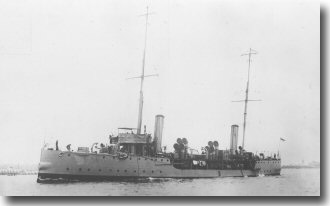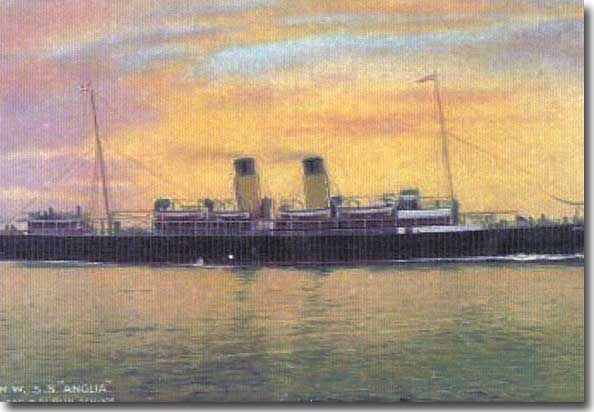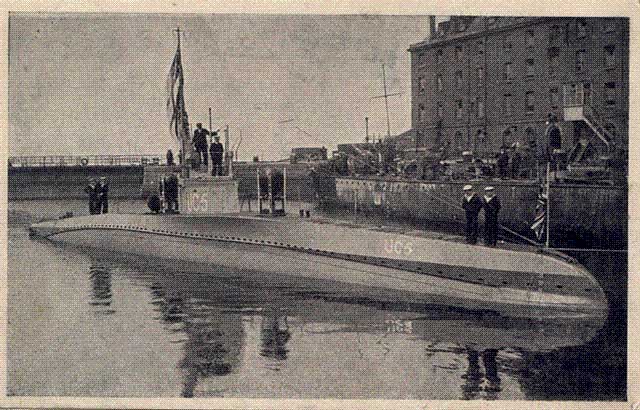(See this update, "More information about Nurses in the Hospital ship Anglia")
Picture of HMS Hazard, who rescued survivors of the British Hospital Ship Anglia, mined off Folkstone in 1915
 |
Anglia had been built in 1900 by W. Denny & Brothers in Dumbarton Scotland for the London & North-Western Railway Co. She was of 1,862 tons with a 424hp triple expansion engine and two propellers, to give her a speed of 21 knots. The ship measured 329 feet by 39 feet to draw 16 feet.
With the advent of WW1, the ship was acquired as an Auxiliary Hospital Ship, and with Captain Lionel John Manning in command, at 1230 on the 17th. of November 1915 she struck a mine, only one mile East of Folkestone Gate, and quickly sank.

Picture of Ladies Deck Cabin on board SS Anglia prior to her conversion to an Auxiliary Hospital Ship
HMS Hazard to the rescue.
The Royal Navy Submarine Depot ship HMS Hazard arrived on the scene to pick up survivors.
Anglia's route, Calais to Dover.
Anglia was returning to Dover from Calais where she had loaded 390 Military personnel, 4 Officers, 1 nurse, 13 wounded Officers, and 372 wounded other ranks, all from the Front Line of the war in France.

SS Anglia prior to her being converted to an Auxiliary Hospital Ship
Number who died.
There is some conjecture about the number who died that day from this mine laid by the German Submarine UC-5. Some reports indicate 127 lives lost in all, another states 139 Military and 25 crew to add to 164 had been lost, but whatever number may be selected it was a significant figure.

UC 5
Thanks to Pip Taylor for use of this image.
Ship wire swept in 1961.
The ship was wire swept in 1961, the wreck lies in about 80 feet of water, and has been both dived on and vandalised since then. Anglia was fitted with quite unusual vented portholes, many of them now missing. The wreck is designated as a war grave and should be respected as such.
German Submarine UC-5
 |
German Submarine UC-5.
It was the German submarine
UC-5 that had laid the fatal mine, now she came to grief, stranding on a sand bank, to be captured by the Royal Navy. She was pulled off and towed to the Thames, refitted, and placed on display, and then used as propaganda, helpful in raising money via war bonds. The boat was later taken to the United States to undertake a similar role in that country.
Conclusion.
HMHS Anglia was yet one more hospital ship in WW1 that was despatched by either an enemy mine or torpedo. Most of these disasters were accompanied by a large loss of life, any service personnel, especially if wounded would have thought, at last I am safe, I am aboard a Hospital ship bearing the immunity of large Red Crosses painted on the ship's side, but it proved not to be. In a total war at sea, these ships were obviously thought to be" Fair Game" by U-Boat commanders, no chivalry in time of war.





